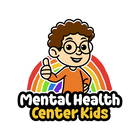Did you know that regular exercise can help young people with autism improve more than just their physical health?
A study published in Frontiers in Psychiatry shows that ongoing, structured physical activity can benefit children and teens with autism in many areas, including their motor skills, thinking abilities, social skills, behavior, and brain function.
Among these, social skills (such as making friends, communicating, and interacting with others) showed the greatest improvement when children participated in regular exercise programs.
The types of exercises used in studies included aerobic activities, swimming, mind-body exercises, and team sports such as ball games.
Researchers believe that there are several reasons exercise works. Physical activity can increase certain brain chemicals that improve mood and reduce anxiety, which makes social interactions easier. Exercise also gives children a sense of accomplishment.
These results strongly suggest that regular physical activity can be a simple and effective way to support the development of those with autism.
Understanding the Research
The goal of this study was to determine how exercise can help children and teens with autism, especially in improving their social skills. The researchers wanted to look at all the available evidence.
To do this, they searched 4 research databases to find studies that focused specifically on exercise for children and adolescents with autism. They included studies where participants had a confirmed autism diagnosis and excluded studies that combined exercise with other types of interventions.
The researchers also examined the types of exercises the children did, how frequently they participated, and how long each session lasted.
These activities included walking, swimming, yoga, and various ball games, which typically lasted 20 to 90 minutes and took place between once and seven times a week.
Here’s what they found:
- Exercise helps children and teens with autism in many ways. It improves their social skills, thinking abilities, behavior, motor coordination, physical health, and even brain function.
- They showed the greatest progress in their social skills. This is likely because exercise improved their mood, which helped them become more open to engaging with others.
- Exercise interventions that lasted several weeks were more effective than one-time or short-term sessions.
- Different types of exercise can work, such as walking, swimming, yoga, and ball games, which are all beneficial. There wasn’t one “perfect” type of exercise. What’s important is consistency.
- Physical activity may increase brain chemicals like dopamine, which help with mood, focus, and motivation.
- Improvements in coordination and balance may also help children feel more confident in social situations.
Practical Strategies for Parents and Caregivers
The findings from this study are not only fascinating — they’re also incredibly useful for us as parents, caregivers, or any adults supporting children. Whether you’re caring for a child with autism or simply want to encourage healthy habits in your family, the benefits of exercise apply to all.
Here’s how we can make the most of these findings and apply them in everyday life:
Make exercise a family activity
Join your child in exercise. Go for walks, swim together, play ball games, or try a family yoga session. On top of modeling healthy habits, this provides opportunities for bonding and “shared fun.” Your participation can make physical activity an enjoyable part of their daily life.
Try different types of activities
Children are more likely to stick with exercise when it’s enjoyable. Mix different types of activities (such as dancing, swimming, or running) to keep things fresh and exciting. Involve your child in choosing the activity. Being part of the decision makes them more motivated to exercise.
Combine movement with socialization whenever possible
Activities like soccer, group games, or tossing a ball with a friend give children a chance to practice cooperation and sharing.
You can start small by setting aside a few minutes each day for a fun activity your child enjoys, such as passing a ball back and forth or playing a short game of tag. Gradually include siblings, other family members, or friends to turn it into a social experience.
While the results are positive, the researchers still need to determine which types, intensities, and frequencies of exercise bring the most benefits.
Bring these benefits into your home! Use our Social Skills Worksheets and Healthy Habits Posters to make learning social skills, healthy routines, and confidence easy.





















































